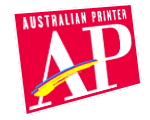Tags:
The Lithographic Institute of Australia (LIA) has announced the availability of its findings on the impact of water hardness on printing quality, and the results have taken many by surprise. The independent study was commissioned after a research paper, which examined the effect of water hardness on lithographic ink performance was presented by LIA NSW at the LIA’s Biennial conference in Sydney in 2001.Contrary to the expectations of many, the key findings of this work determined that water hardness in the range 0° - 18° German had no influence on:
• The water pick up of ink
• The ability of an ink to transfer and resist piling when emulsified
• The structure or flow of an ink
• The plate sensitisation or catch up tendency of an ink
• The tack of an ink when emulsified
The study found that the choice of ink and fountain solution and the compatibility of both were of much greater significance in influencing the quality of lithographic printing.
Printers continued to report intermittent quality problems associated with apparent poor ink / paper performance. The LIA then commissioned a second study to evaluate the effect of water hardness on the printability of coated papers. There was a well recognised application problem associated with the development of ink lay and second impression mottle when printing coated papers at speed and the study was specifically designed to address these issues.
The LIA commissioned Independent Ink Technologies, one of Australia’s foremost graphic arts research centres, to conduct these studies and received significant financial support from the Collie Trust and Australian Paper.
The results of this study, which were presented to the Institute’s conference in Geelong in October 2003, showed that water hardness can improve, albeit marginally, the lay of ink on papers pre disposed to wet or second impression mottle. Hardening to just 6° German is sufficient to cause such an improvement and hardening to 12° or 18° makes no further difference.
To the surprise of the researchers, the use of Isopropyl Alcohol at eight per cent with 0° and 18° German hardness increases the tendency to mottle in four colour process printing.
The difference is very marginal with good performing papers but, says the LIA, is very significant with troublesome papers.
The complete text and graphics of both research projects is available in printed form at $50 for LIA members or $60 non members, or on CD at $25 for members and $35 for non members. Prices include GST, handling & postage. Phone Margaret Leuton on or fax to request an order form. From mid February the studies can be accessed on the Institute’s web site by visiting http://www.lia.com.au.






